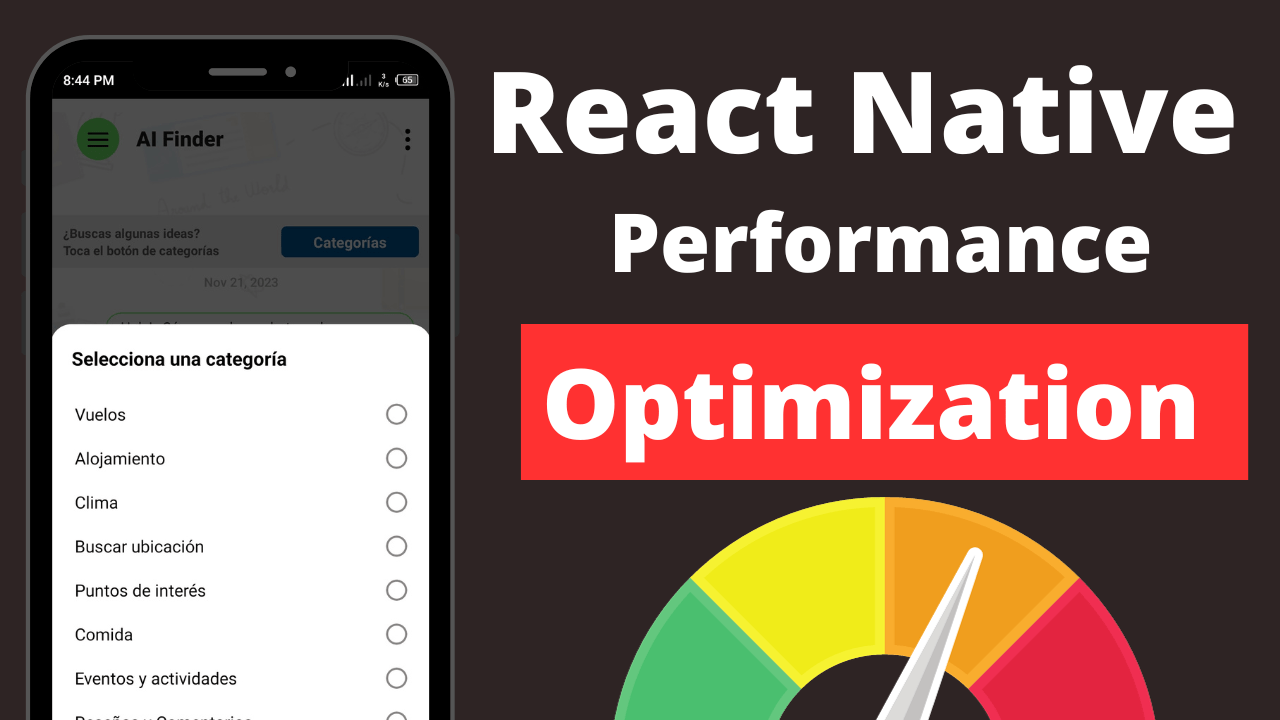React Native, a popular framework for building cross-platform mobile applications, empowers developers to create dynamic and responsive apps with a single codebase. However, ensuring optimal performance is crucial for delivering a best user experience. In this article, we will explore various strategies and best practices to optimize the performance of your React Native app.
1. Leverage PureComponent and Memoization
React components often re-render unnecessarily, consuming valuable resources. To mitigate this, consider using PureComponent or the React.memo higher-order component. These tools prevent re-renders when the component’s props and state remain unchanged, improving overall rendering efficiency.
import React, { PureComponent } from 'react';
class MyPureComponent extends PureComponent {
// Component logic here
}
const MemoizedComponent = React.memo(MyPureComponent);
2. Virtualized Lists for Efficient Rendering
Rendering large lists efficiently is a common challenge in mobile app development. React Native provides the FlatList and SectionList components for handling such scenarios. These components use virtualization to render only the items currently visible on the screen, reducing the memory footprint.
import { FlatList } from 'react-native';
const MyList = ({ data }) => (
<FlatList
data={data}
renderItem={({ item }) => <ListItem data={item} />}
keyExtractor={(item) => item.id.toString()}
/>
);
3. Async Rendering for Improved Responsiveness
Asynchronous rendering techniques, including React.memo, Suspense, and React.lazy, can significantly enhance the user interface’s responsiveness. By loading components and data asynchronously, the app remains interactive even during resource-intensive operations.
import React, { lazy, Suspense } from 'react';
const MyLazyComponent = lazy(() => import('./MyLazyComponent'));
const MyApp = () => (
<Suspense fallback={<LoadingSpinner />}>
<MyLazyComponent />
</Suspense>
);
4. Utilize Native Modules and Components
For CPU-intensive tasks, consider offloading the processing to native code using native modules. Additionally, implement native components for complex UI elements, ensuring optimal performance in scenarios where JavaScript rendering might fall short.
5. Optimize Image Handling
Efficiently handling images is crucial for app performance. Utilize the appropriate image formats for each platform, such as WebP for Android and JPEG/PNG for iOS. Compress and resize images to reduce file size, improving loading times.
6. Code Splitting for Smaller Bundles
Implement code splitting to break down your application into smaller chunks. Dynamic imports and tools like react-loadable enable loading specific code portions on demand, reducing the initial bundle size and improving load times.
7. Tree Shaking and Minification
Enable tree shaking during the build process to eliminate unused code and dependencies. Additionally, ensure that your code is minified and obfuscated to reduce the overall bundle size and enhance performance.
8. Performance Monitoring and Profiling
Utilize tools such as Flipper, React DevTools, and third-party monitoring services to identify and analyze performance bottlenecks. Profiling your app during development provides valuable insights into areas that require optimization.
9. Avoid Unnecessary Renders
Prevent unnecessary renders by using shouldComponentUpdate or React.memo. Additionally, employ the useCallback and useMemo hooks for functional components to optimize memoization and avoid redundant computations.
import React, { useCallback, useMemo } from 'react';
const MyComponent = ({ data }) => {
const memoizedCallback = useCallback(() => { /* callback logic */ }, [data]);
const memoizedValue = useMemo(() => computeExpensiveValue(data), [data]);
// Component logic here
};
10. Offload CPU-Intensive Tasks to Separate Threads
Improve app responsiveness by offloading CPU-intensive tasks to a separate JavaScript thread using tools like react-native-workers or Web Workers.
Conclusion
React Native offers a powerful framework for building high-performance mobile applications. By implementing these performance optimization strategies, developers can ensure their apps deliver a smooth and responsive user experience. Regularly profiling and monitoring your app’s performance will help identify areas for improvement and maintain optimal efficiency throughout the development lifecycle.
Optimizing performance is an ongoing process, and staying informed about the latest tools and techniques will empower developers to create React Native apps that shine in terms of responsiveness and user satisfaction.

